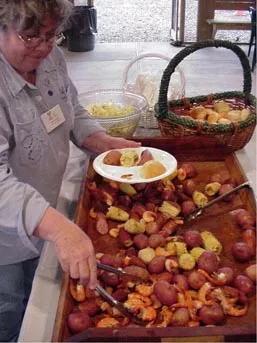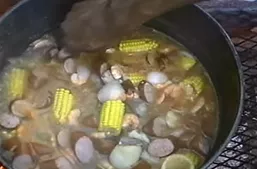The South Carolina Lowcountry, embracing the Sea Islands and the Coastal Plain, is home to a broad range of culinary traditions. Greatly influenced by French, English, African-American, and Native-American foodways, the variety is impressive and includes several seafood stews. Frogmore stew, also known as Lowcountry Boil or Beaufort Stew, is one of the most popular. Named for one of the oldest Sea Island communities, the typical Frogmore stew recipe is simple – red skin potatoes, smoked sausage, ears of yellow corn, and plenty of fresh shrimp. Most recipes call for these ingredients to be boiled with certain seasonings, like crab boil, and the stew is normally served with hot sauce. Generally, the ingredients in Frogmore Stew are boiled and then strained. The vegetables, shrimp, and sausage are removed from the pot and eaten only after this straining process is completed. This method of consumption is quite distinct from other Southern stews. It is commonly agreed that a Frogmore stew cooked long enough to thicken significantly becomes what is generally referred to as a muddle.
Tellingly, this stew is equally at home on Lowcountry townhouse tables and at the family reunions of people who have traditionally farmed and fished the Sea Islands. This sharing of traditions, or creolization, has taken place since the era of the rice plantations that dominated the South Carolina coastal plain. As with any tradition, change and variation are inherent parts of the process. Enslaved African-Americans brought with them the skills and knowledge needed to grow rice, as well as culinary traditions that became intertwined with traditions of other ethnic groups. Ervena Faulkner, food writer and Sea Island native, says the stew is made today as a special occasion food, served especially for relatives from “up North” when they come down South to visit.


